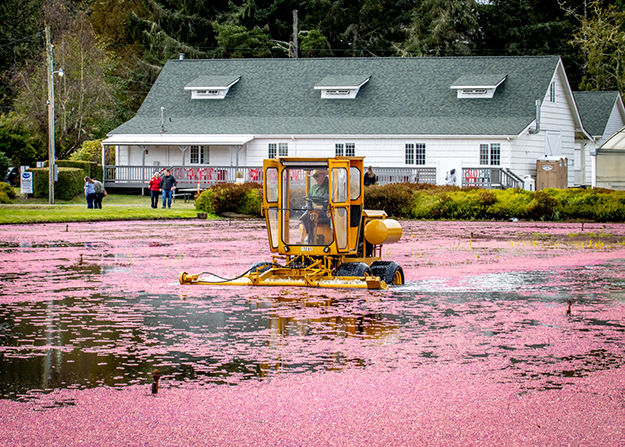When you think of Washington state agriculture, we would guess that cranberries probably are not the first thing that pop up in your mind. You probably think of apple's first and foremost. And while there is definitely an abundance of apple varieties, there is also an abundance of cranberries. So much so that Washington state is the fifth largest producer of cranberries in the nation.
These deliciously tart red berries have been grown in the southwestern peninsula of Washington since 1872 when four entrepreneurs bought 1,600 acres of the boggy land to begin farming. Today, Long Beach and Grays Harbor are our leading cranberry producing regions in Washington state.
Cranberries can be a tough crop to grow since they are produced on small vines that thrive in cool, sandy, boggy land. Berries ripen for six weeks and harvesting usually takes place in September through October. Farmers often use the method of flooding their cranberry fields to make harvesting easier because cranberries have small pockets of air that allow them to float to the surface to then be collected.
At one point in time the cranberry wasn't seen as a very popular berry unless Thanksgiving was around the corner. However, with Ocean Spray entering the scene with their beloved juice, craisins and other cranberry products, growers began seeing a demand for the berry. And today over 95% of the cranberry crop in Washington is shipped directly to Ocean Spray after harvest to be used in their cranberry juice.
If you're eager to learn more about these berries and the importance of them in Washington state, we would recommend heading down to Long Beach and visiting the Cranberry Museum.
Open year round, this museum provides the full history of cranberries in the state and details the growing process as well as the marketing process behind cranberries. Your visit can start in the Cranberry Museum itself exploring the various exhibits. Afterwards, we recommend the self-guided walking tour, which is open 8 a.m. to dusk. This self-guided tour will allow you to explore the different varieties of cranberries, various irrigation systems, and how the crops are planted and harvested. October is the best month to visit because visitors will get a first-hand look at the farmers harvesting the berries.
After the self-guided walking tour, stop by the gift shop which features everything cranberry from cranberry wines, candies, soaps and candles to various other homemade goodies to take home as keepsakes. Depending on the day, you may even get a chance to snag a scoop of their delicious cranberry ice cream.
A not to be missed event at the museum is the annual Cranberry Festival held every October. This year's event will take place on the weekend of Oct. 14-15, which allows event attendees the opportunity to see the wet harvest, listen to local musicians and learn all about cranberries.
CRANBERRY MUSEUM, open daily 10 a.m. to 5 p.m., 2907 Pioneer Rd., Long Beach, 360-642-5553, http://cranberrymuseum.com/.





Read Comments